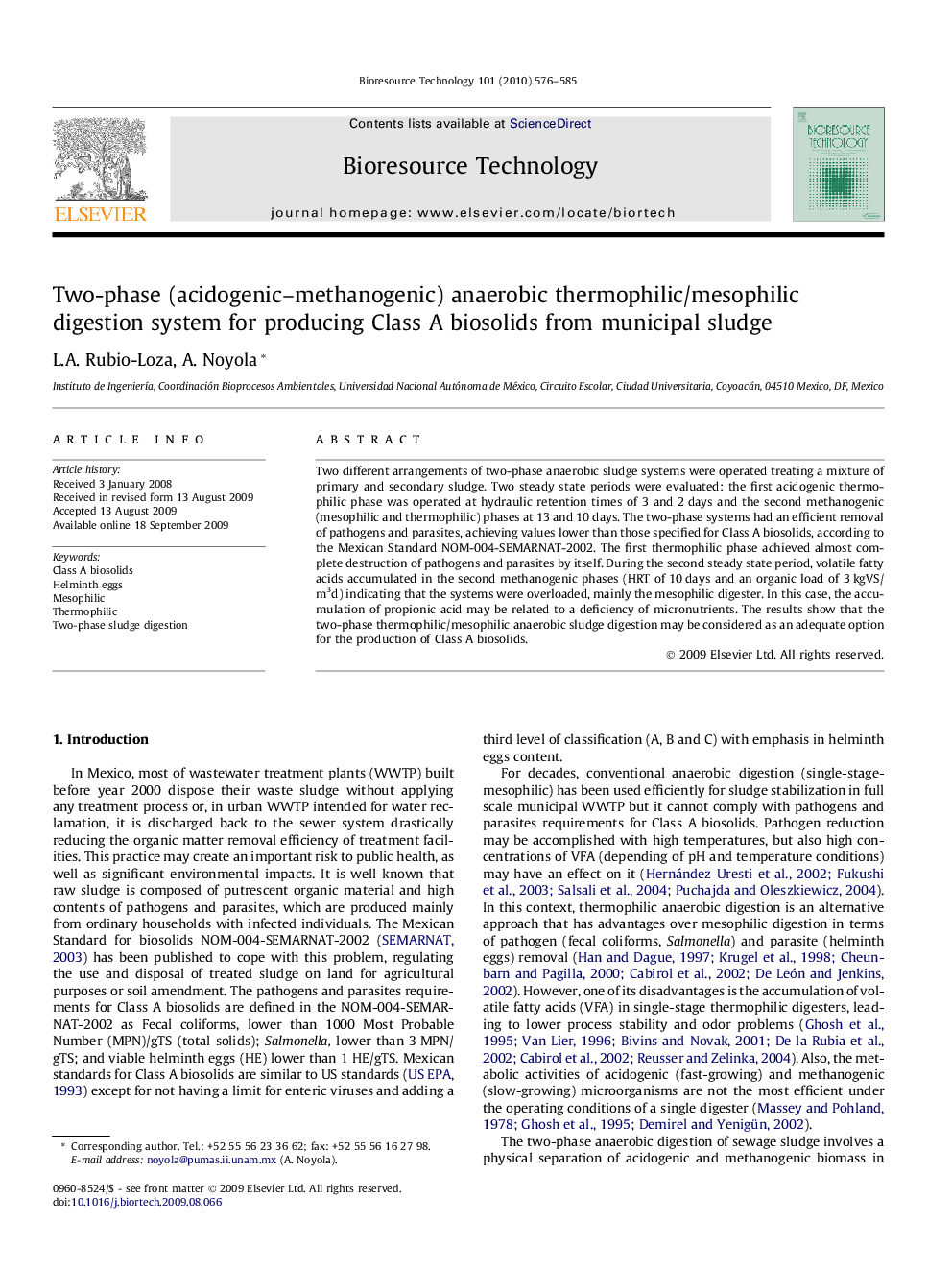| Article ID | Journal | Published Year | Pages | File Type |
|---|---|---|---|---|
| 684175 | Bioresource Technology | 2010 | 10 Pages |
Abstract
Two different arrangements of two-phase anaerobic sludge systems were operated treating a mixture of primary and secondary sludge. Two steady state periods were evaluated: the first acidogenic thermophilic phase was operated at hydraulic retention times of 3 and 2Â days and the second methanogenic (mesophilic and thermophilic) phases at 13 and 10Â days. The two-phase systems had an efficient removal of pathogens and parasites, achieving values lower than those specified for Class A biosolids, according to the Mexican Standard NOM-004-SEMARNAT-2002. The first thermophilic phase achieved almost complete destruction of pathogens and parasites by itself. During the second steady state period, volatile fatty acids accumulated in the second methanogenic phases (HRT of 10Â days and an organic load of 3Â kgVS/m3d) indicating that the systems were overloaded, mainly the mesophilic digester. In this case, the accumulation of propionic acid may be related to a deficiency of micronutrients. The results show that the two-phase thermophilic/mesophilic anaerobic sludge digestion may be considered as an adequate option for the production of Class A biosolids.
Related Topics
Physical Sciences and Engineering
Chemical Engineering
Process Chemistry and Technology
Authors
L.A. Rubio-Loza, A. Noyola,
